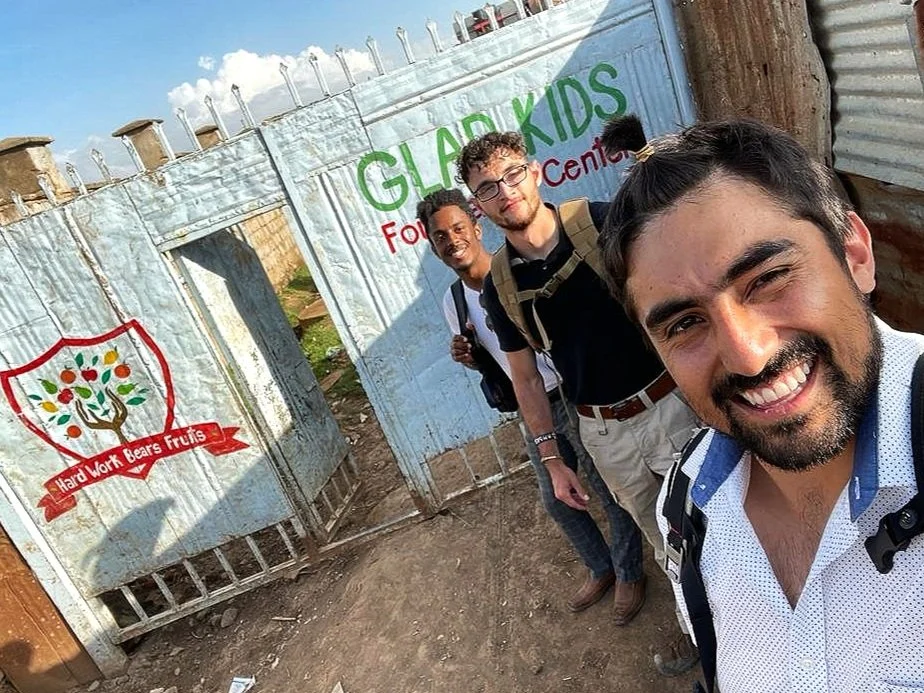Nairobi, Kenya
“Education is the most powerful weapon which you can use to change the world.” by Nelson Mandela
In May of 2022 I traveled to Nairobi, Kenya to volunteer at Glad Kids School, founded by Elosy Kanyua, with hopes to provide education for students from the rural, slum neighborhoods in Nairobi.
The first thing Elosy Kanyua said to me was:
“Learn as much as you can from the students, and they will learn as much as they can from you.”
At that time, I have never taught school. I traveled to Africa on a whim of exploration and passion. Soon I began to understand what she meant.
What follows is my story, experiencing Kenya first hand what most people only experience through a television screen.
Kenya | My Story
Namibia
In April of 2023 I flew to Windhoek, Namibia for a wildlife conservation volunteer program that aims to protect the wildlife through different initiatives and activities.
For two weeks I volunteered at their wildlife sanctuary and performed many activities that contribute to protecting and preserving the wildlife that inhabits the reserve. Some of the rescues could be released, but for others, the sanctuary would become their forever home.
*Disclaimer: I am not glorifying taking photos with wild animals, it’s to show the outcome of Human-Wildlife conflict that I will discuss later on.
Daily activities at the sanctuary included preparing the small animals food and feeding them, cleaning enclosures, animal enrichment such as the baboon walk, carnivore feeding, etc.
I learned about the ongoing issues with Human-Wildlife Conflict and how it impacts the animals to a extreme.
Human-Wildlife Conflict
What is Human-Wildlife Conflict?
It’s when encounters between humans and wildlife lead to negative results, such as loss of property, livelihoods, and even life.
At the sanctuary, I saw many examples of Human-Wildlife Conflict.
First lets talk about the baboons. In Namibia, baboons are considered pests due to their relentless behavior. Disturbing human areas and causing unwanted problems, baboons in Namibia are often intentionally killed by humans for that reason. They’re also kept as pets when they’re young with the owners not realizing the size and space they require as adults. Baboons also do not make great pets as they are aggressive and can often attack when provoked.
The wildlife sanctuary is home to many baboons of all ages, the adults are separated from the juveniles in a different enclosure because the adults are much more aggressive and have fang like teeth that can kill.
The sanctuary is home to many different carnivorous cats such as lions, leopards and cheetahs.
One unforgettable experience was getting to walk with cheetahs and learning about their conflict story.
These three cheetahs, Flash, Bullet, and Bolt, were stripped of their freedom to roam wild when they were orphaned as cubs.
Cheetahs are considered vulnerable due to their decreasing population. This is the result of human population growth pushing these animals out of their natural habitat which raises the question, where do they get their food? Cheetahs hunt prey to provide for their young and by being subject to habitat loss, their survival instinct is then to go into surrounding farms to hunt livestock.
This results in the farmers shooting and killing the cheetahs to protect their livestock.
Flash, Bullet, and Bolt’s mother was shot and killed leaving them helpless. They were rescued by the Sanctuary and because they were so little being raised by humans, they can never be released into the wild.
We were fortunate enough to walk with them and learn about their situation and the Human-wildlife Conflict that took their freedom.
They are 7 years old and will remain in the Sanctuary under the care of their caretakers and volunteers.












